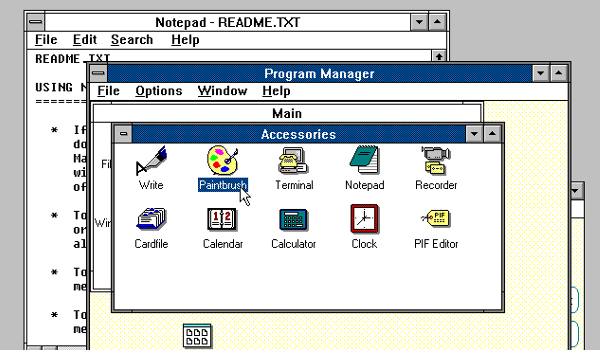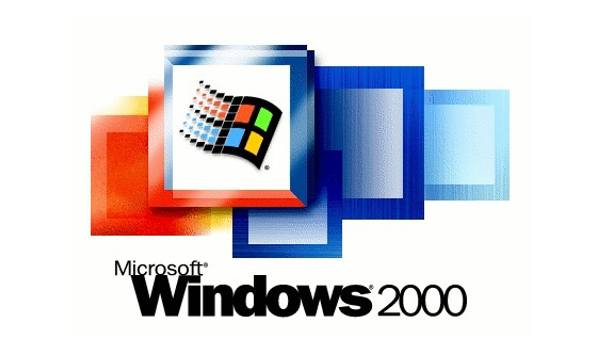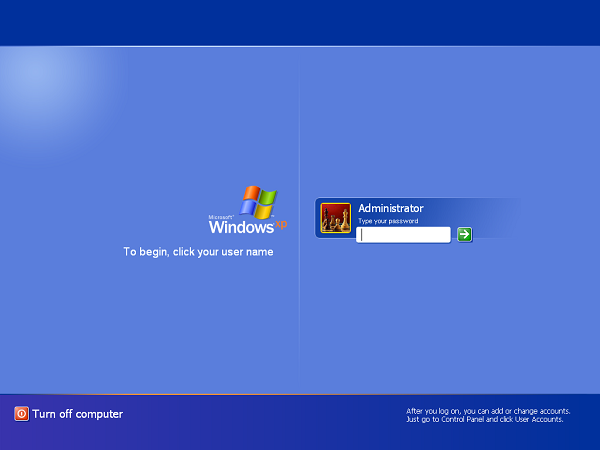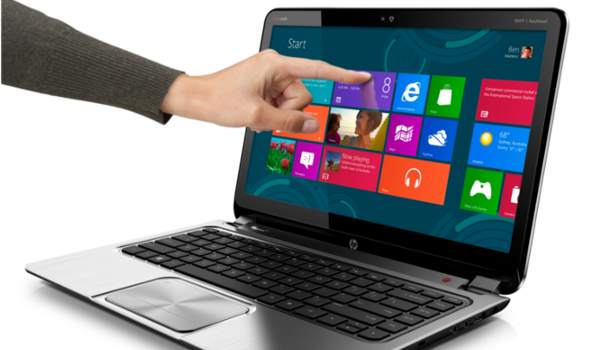History of Windows
Looking through Windows – a history of the world’s biggest OS
It all started on 20th November 1985. It was a Wednesday, 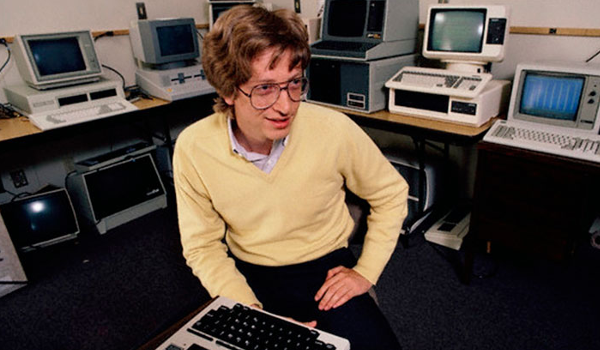 Ronald Reagan was in office (possibly watching Rocky IV) and Microsoft released the first version of its new operating system: Windows 1.0. “Interface Manager” was the initial code name, but “Windows” prevailed because windows were precisely what its computing boxes or screens looked like. Bill Gates called it “unique software for the serious PC user.”
Ronald Reagan was in office (possibly watching Rocky IV) and Microsoft released the first version of its new operating system: Windows 1.0. “Interface Manager” was the initial code name, but “Windows” prevailed because windows were precisely what its computing boxes or screens looked like. Bill Gates called it “unique software for the serious PC user.”
Serious stuff. Windows 1.0 required 256 kilobytes, two double-sided floppy disk drives and a graphics adapter card. But seriously user friendly was what it was aiming to be.
Rather than typing MS-DOS commands, users could now move a mouse to click their way through screens. Packed with drop-down menus, scroll bars and icons, Windows also featured Paint, Windows Writer and Notepad. That was not all, there was also a calendar, clock, calculator and even a game (Reversi)! Where to from here?
1987 – 1990: The need for speed
It was another Wednesday when Microsoft released Windows 2.0 on 9th December 1987. This came with desktop icons and expanded memory, as well as improved graphics support so users could overlap windows, control screen layout and even use keyboard shortcuts. The name of the game was now speed and efficiency: the Intel 286 processor soon gave way to the Intel 386, and the faster Windows/386 was born.
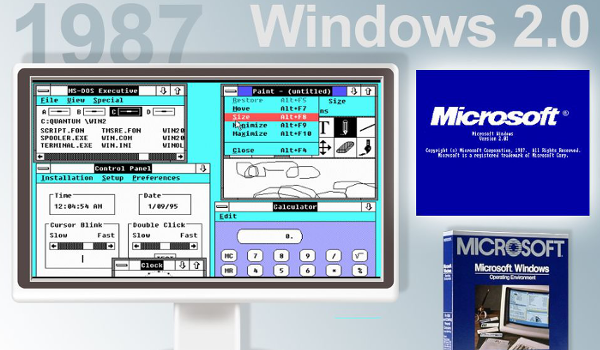
1990 – 1994: A new wave of functionality and sales
On 22nd May 1990, to the tunes of Madonna’s Vogue, Windows 3.0 made its debut. Hot on its heels came Windows 3.1. Together, they sold 10 million copies in their first two years, making them the most widely used Windows OS ever (outstripping even Madonna’s Vogue by a few million, and proving that blondes don’t have more fun). Windows now had significantly better performance and advanced graphics with 16 colours. Also new to Windows, Program Manager, File Manager and Print Manager had arrived.
1995 – 1998: Welcome to a bold new world
This was the era of faxes, email, a dazzling online world and Windows 95. The highly publicised launch on 24th August 1995 even featured the Rolling Stones singing “Start Me Up”. The Start button had arrived (along with the taskbar and minimise, maximise and close buttons). The 32-bit OS featured enhanced multimedia capabilities, more powerful features for mobile computing and integrated networking. PCs needed a 386DX processor and at least 4 MB of RAM.
1998 – 2000: Welcome home
Enter Windows 98, Windows 2000 and Windows ME. Here Windows began its journey into the homes and lives of millions of consumers. Among many new features, DVDs and USBs were now supported. The advertising tagline for Windows 98 summed it up: “Works Better, Plays Better.” And after Windows 98, Microsoft waved goodbye to MS-DOS.
2001 – 2005: Usability gets a makeover
25th October 2001 was the dawn of an OS centred on usability and a unified Help and Support services centre: Windows XP. The clean, simplified visual design made frequently used features more accessible. Network Setup Wizard, Windows Media Player, Windows Movie Maker and improved digital photo capabilities cemented its suitability for home use. Business users got excited about XP Professional, with its fine crop of file encryptions, system restore and advanced networking.
2006 – 2008: Smarter security
In 2006, Windows Vista took security to lofty new heights. User Account Control helped prevent harmful software from making changes to the PC. Windows Vista Ultimate offered even better protection with BitLocker Drive Encryption.
2009 – 2011: The wireless world
By the late 2000’s, the world had cut its cables. Laptops were outselling desktops and people were flocking to public wireless hotspots or connecting to private networks at home. Windows 7 introduced Windows Touchand, at a touch, the interface got fun. Users browsed the web and flipped through documents – all via the touch screen. An incredible 8 million beta testers were evaluating the system prior to release!
2012 – 2014: Now it’s all happening across PCs, laptops, tablets and mobiles
From the chipset to the user experience and interface, suddenly things got radically different. Windows 8 brought colourful tiles that connected to people, files, apps and websites, and worked across all devices. Apps were (and still are) front and centre, along with a new place to get them: the app store.
Windows 8.1 then combined Microsoft’s vision of a re-imagined OS with customer feedback. Improvements included more Start screen personalisation and booting directly to desktop. Workplace Join and Workfolders enable Windows devices to connect more easily to corporate resources.
2015: Going beyond the box
In early 2015 Windows 10 arrived, but only to a select few. Via the Windows Insider Programme, enthusiasts were invited to contribute to the development of a product that would allow seamless, super-fast collaboration across multiple devices. Number 10 is also the time for firsts: it’s the first time that a Windows upgrade is free (within one month of launching, 75 million devices were running Windows 10). It’s also the first appearance of a digital assistant on a PC: Cortana who learns from users to create a personalised journey across all devices. 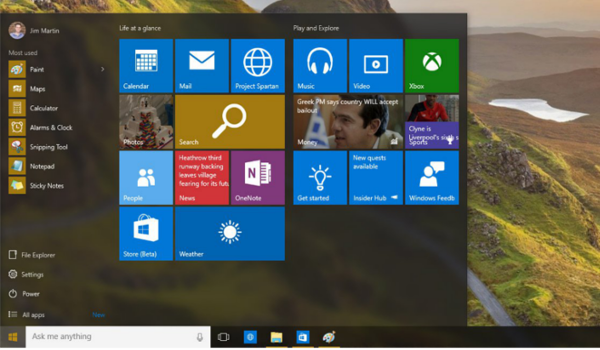
With such a dramatic evolution over 30 years, has anything stayed the same? Yes! The Command Line Interface still brings control to IT administrators everywhere, while Solitaire is the long-standing enemy of office boredom. Developed by a Microsoft intern, it has been part of the Windows product line since Windows 3, and was introduced "to soothe people intimidated by the operating system.” Hopefully, in a dazzling new world of hyper-intuitive, personalised, connected devices that will no longer be necessary.
